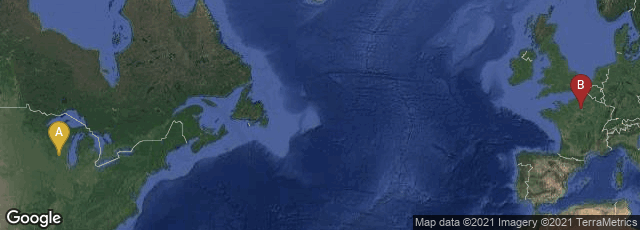
A: Madison, Wisconsin, United States, B: Paris, Île-de-France, France
In 1967 French cartographer and theorist of information graphics Jacques Bertin published Sémiologie graphique. Les diagrammes, les réseaux, les cartes in Paris at the press of Gauthier-Villars. This book provided the first theoretical foundation for information graphics: a systematic classification of the use of visual elements to display data and relationships, primarily in static graphics. Bertin's system consisted of seven visual variables: position, form (shape), orientation, color (hue), texture, value (lightness or darkness of color), and size, combined with a visual semantics for linking data attributes to visual elements.
Bertin revised his book for a second edition published in 1973. It was translated into German in 1974. In 1983 an English translation of the second French edition by William J. Berg, with a foreword by Howard Wainer, and a new preface by Bertin, was published by the University of Wisconsin Press as Semiology of Graphics: Diagrams, Networks, Maps. In 2010 the English translation was reissued with a new Foreword by Wainer. The 438 page book contained over 1000 images, a few in color.
A widely referenced quotation from Bertin's book is:
"And now, at the end of the twentieth century, with the pressure of modern information and the advances of data processing, graphics is passing through a new and fundamental stage. The great difference between the graphic representation of yesterday, which was poorly dissociated from the figurative image, and the graphics of tomorrow, is the disappearance of the congential fixity of the image.
"When one can superimpose, juxtapose, transpose, and permute graphic images in ways that lead to groupings and classings, the graphic image passes from the dead image, the 'illustration,' to the living image, the widely accessible research instrument it is now becoming. The graphic is no longer only the 'representation' of a final simplification, it is a point of departure for the discovery of these simplifications and the means for their justification. The graphic has become, by its manageability, an instrument for information processing. . . . " [I added the bold face. JN]
In his foreword to the 1983 English translation Wainer called Bertin's work, "the most important work on graphics since the publication of Playfair's Atlas [The Commerical and Political Atlas (1785-86)]."